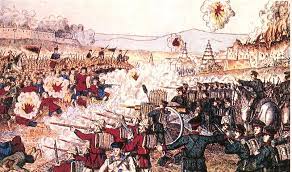The Rampa Rebellion was an armed uprising that took place in the Rampachodavaram region of present-day Andhra Pradesh between 1922 and 1924. The rebellion was led by the tribal people of the region, who were discontent with the British colonial government’s policies of land acquisition, forest conservation, and taxation.

The tribal people of the Rampachodavaram region were predominantly farmers and forest dwellers, and they relied on the forests for their livelihood. However, the British colonial government had declared the forests as protected areas and restricted the tribal people’s access to forest resources. The government also introduced new taxes, which the tribal people found difficult to pay.
The Rampa Rebellion began in November 1922 when the tribal people attacked and killed several British officers and police personnel in the region. The rebels then seized control of the government offices and declared their independence from British rule. The rebellion spread quickly, and several other tribal groups in the neighboring regions joined the movement.
The British government responded with force, and several military operations were launched to suppress the rebellion. The government also imposed martial law in the region and arrested several rebel leaders. The rebellion continued for almost two years, and it was finally suppressed in 1924.
The Rampa Rebellion was significant because it was one of the largest and most prolonged uprisings against British rule in India. The rebellion was also unique because it was led by the tribal people, who had been marginalized and oppressed by the colonial government’s policies. The rebellion brought attention to the grievances of the tribal people and their struggle for self-determination and autonomy.
Although the Rampa Rebellion was ultimately suppressed by the British government, it served as a catalyst for the Indian independence movement and inspired several other movements for self-determination and autonomy in India. Today, the rebellion is remembered as a symbol of the tribal people’s resistance against colonialism and oppression.
Important Links